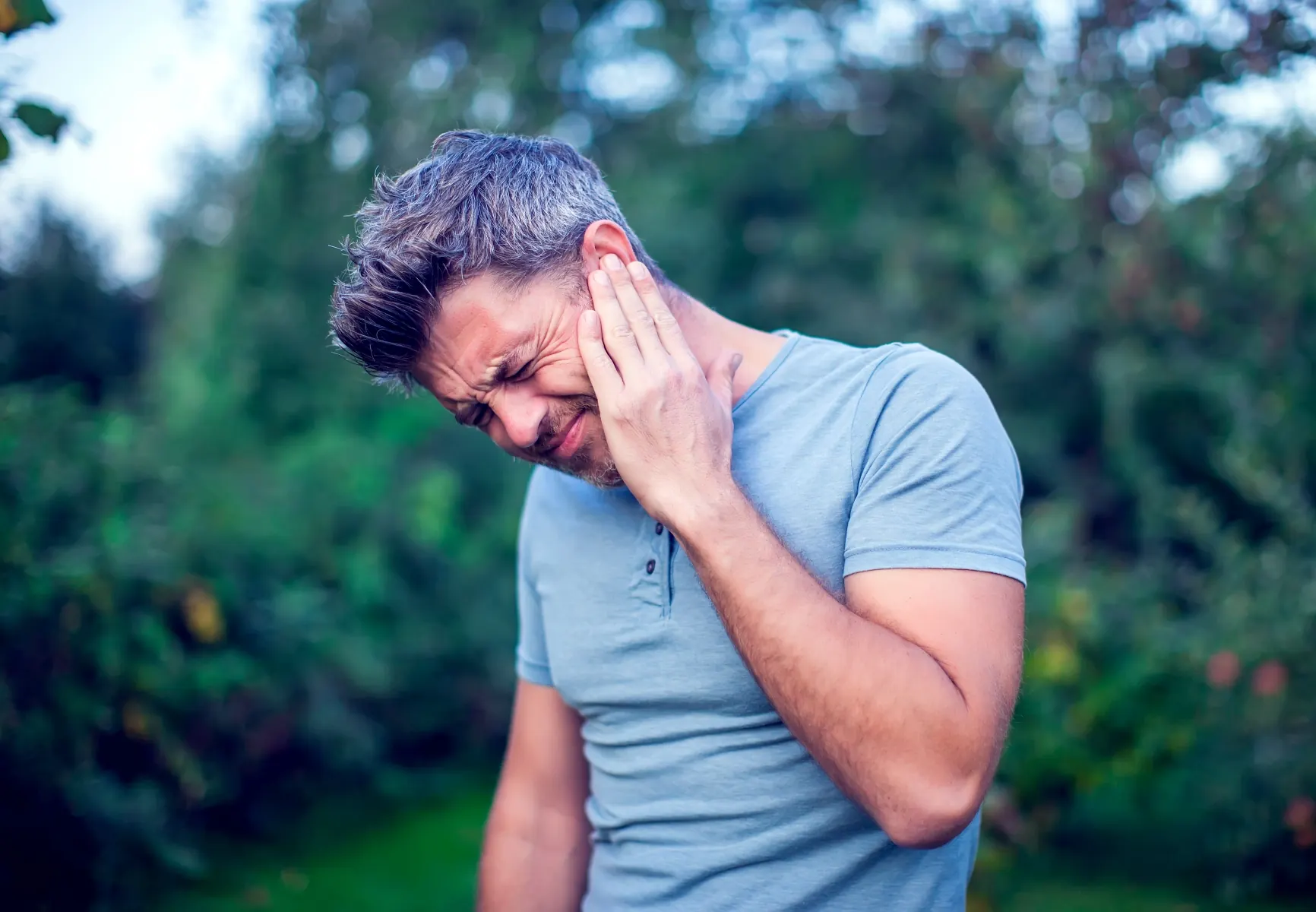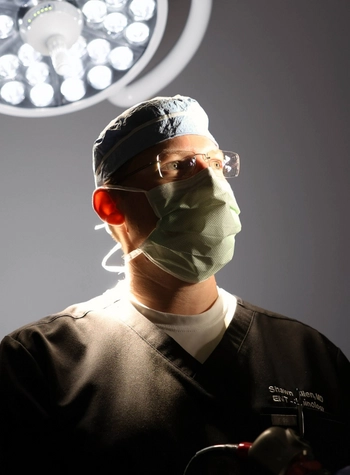Dr. Shawn Allen has either authored or reviewed and approved this content.
Page Updated:Breathe better, sleep better, feel better!
Eustachian tube dysfunction can cause painful ear infections and other symptoms, and may lead to permanent ear damage and hearing loss. Board-Certified Otolaryngologist (ENT) Dr. Shawn Allen performs in-office Eustachian tube balloon dilation, helping his patients from Houston, The Woodlands, and nearby Texas communities find relief.

The Eustachian tube is a passageway that links the middle ears to the back of the nose and throat. The Eustachian tubes open when a person chews, swallows, or yawns, performing a number of essential functions:
Eustachian tube dysfunction (ETD) is a result of clogging of the Eustachian tube, which prevents it from opening. Often, this is a result of inflammation caused by a sinus infection or allergies that leads to an accumulation of mucus. This is a common cause of middle ear infections (otitis media), and may produce symptoms such as:
Common types of Eustachian tube dysfunction include:
This disorder affects the valve of the Eustachian tube, causing it to remain open. Common Patulous Eustachian tube dysfunction may be caused by allergies, weight loss, gastroesophageal reflux disease (GERD), or neuromuscular conditions. Symptoms often include the sensation that the ears are full and patients hearing their own voices or bodily functions very loudly.
Obstructive Eustachian tube dysfunction occurs when the Eustachian tube valve does not open as it should. This can cause muffled hearing, a sensation of fullness in the ears, and ear pain or pressure.
Baro-Challenge-Induced Eustachian tube dysfunction causes what many patients experience as ear popping during an airplane flight, a drive to high elevation, or SCUBA
Trusted Source
Eustachian Tube Dysfunction
Johns Hopkins Medicine
Go to Source
diving.
In most cases, Eustachian tube dysfunction can be effectively treated with occasional decongestants, antihistamines, and/or steroid nasal sprays. When symptoms persist despite these treatment options or in cases of chronic Eustachian tube dysfunction, balloon dilation of the eustachian tubes may be necessary.

Eustachian tube dysfunction is very common in children, and it also affects up to 11 million adults in the United States every year. Untreated Eustachian tube dysfunction can negatively impact a patient’s quality of life and lead to permanent ear damage, potentially resulting in hearing loss or eardrum
Trusted Source
Prevalence of Eustachian Tube Dysfunction in Adults in the United States
Shan A, Ward BK, Goman AM, Betz JF, Reed NS, Poe DS, Nieman CL
Go to Source
retraction.
In the past, ETD was treated with invasive procedures such as pressure equalization tube placement (PETs). Now, Dr. Allen is able to treat Eustachian tube dysfunction with in-office balloon dilation of the Eustachian tube, which is a safe, simple, and rapid procedure that leads to symptom improvement in the majority of patients.
If you are experiencing ear pain or other symptoms of Eustachian tube dysfunction, the first step in treating the issue is to attend a consultation with Dr. Shawn Allen. During this appointment, Dr. Allen will perform an examination of your ears and determine whether Eustachian tube balloon dilation is the proper method of treatment.
Eustachian tube balloon dilation is performed under general anesthesia. To begin the procedure, Dr. Allen will pass an endoscope through the nasal cavity to visualize the Eustachian tube opening. A catheter will be inserted, through which a small balloon will be introduced into the blocked eustachian tube. Dr Allen will gently inflate the balloon, clearing the swelling and opening the Eustachian tube to restore function.

In the days following balloon dilation of the eustachian tubes, some discomfort such as a sore throat may be expected. Patients should avoid blowing their noses and strenuous activities for at least one week. Dr. Allen will evaluate the patient during a follow-up appointment to determine whether additional treatment is necessary.
While some patients encounter some relief shortly after their Eustachian tube dilation, the full results are usually realized after two weeks.
Eustachian tube dilation has up to a 92.3% success
Trusted Source
Balloon dilation of the Eustachian tube: clinical experience in the management of 126 children
Tisch M, Maier H, Sudhoff H
Go to Source
rate.
Eustachian tube dilation has been approved by the FDA, and is considered to be a safe procedure when performed by an experienced surgeon such as Dr. Shawn Allen. Risks of Eustachian tube dilation are rare, and may include infection, nose bleeds, and tissue
Trusted Source
Eustachian Tube Balloon Dilation
Mount Sinai
Go to Source
trauma.

If you suffer from ear infections, contact Dr. Shawn Allen to learn more about Eustachian tube balloon dilation. Dr. Allen is proud to serve patients from Houston, The Woodlands, Texas.
1 Cleveland Clinic. Eustachian Tubes. Available: https://my.clevelandclinic.org/health/body/22072-eustachian-tubes#. Accessed March 7, 2023.
2 Johns Hopkins Medicine. Eustachian Tube Dysfunction. Available: https://www.hopkinsmedicine.org/health/conditions-and-diseases/eustachian-tube-dysfunction. Accessed March 7, 2023.
3 Shan A, Ward BK, Goman AM, Betz JF, Reed NS, Poe DS, Nieman CL. Prevalence of Eustachian Tube Dysfunction in Adults in the United States. JAMA Otolaryngol Head Neck Surg. 2019 Oct 1;145(10):974-975. doi: 10.1001/jamaoto.2019.1917. PMID: 31369057; PMCID: PMC6681559. Available: https://pubmed.ncbi.nlm.nih.gov/31369057/. Accessed March 7, 2023.
4 Tisch M, Maier H, Sudhoff H. Balloon dilation of the Eustachian tube: clinical experience in the management of 126 children. Acta Otorhinolaryngol Ital. 2017 Dec;37(6):509-512. doi: 10.14639/0392-100X-1690. PMID: 29327736; PMCID: PMC5782429. Available:
5 Mount Sinai. Eustachian Tube Balloon Dilation. Available: https://www.mountsinai.org/care/ent/services/nasal-sinus-allergy/eustachian-tube. Accessed March 7, 2023.
Dr. Shawn Allen has either authored or reviewed and approved this content.
Page Updated: